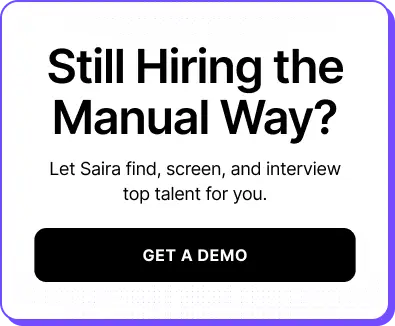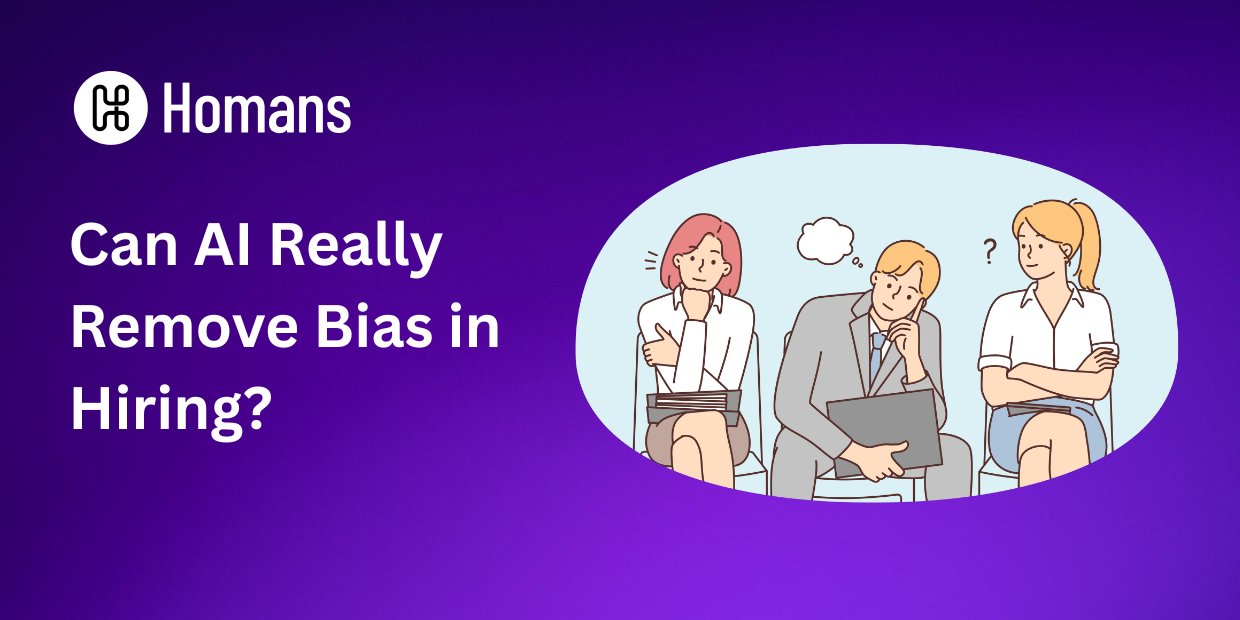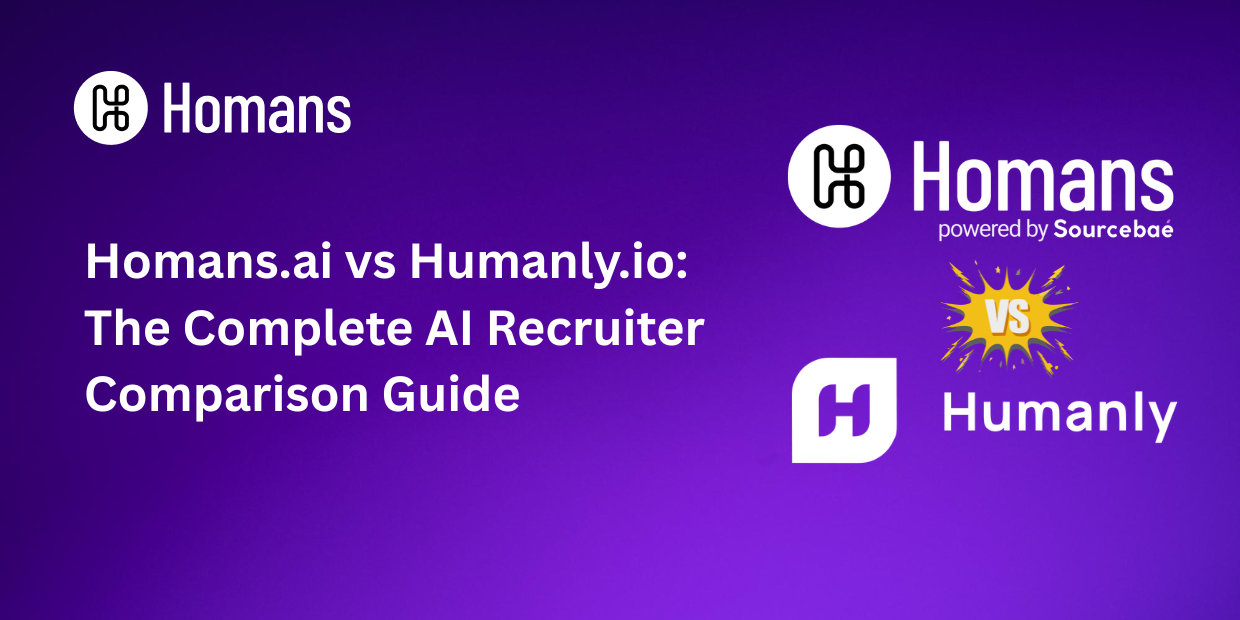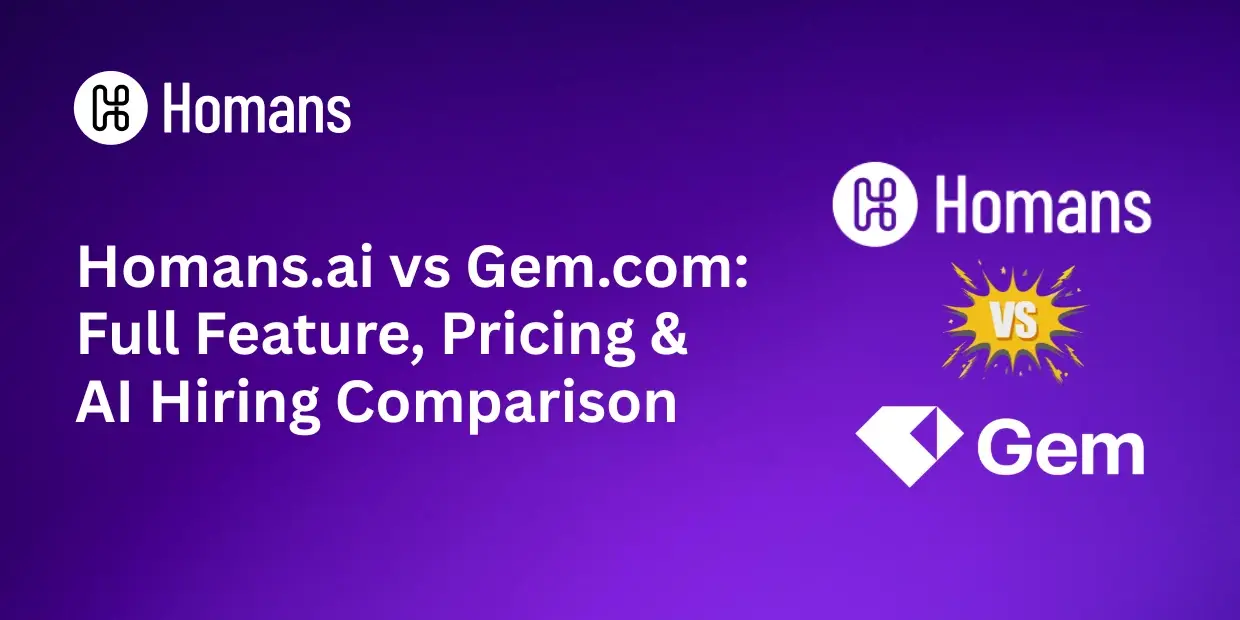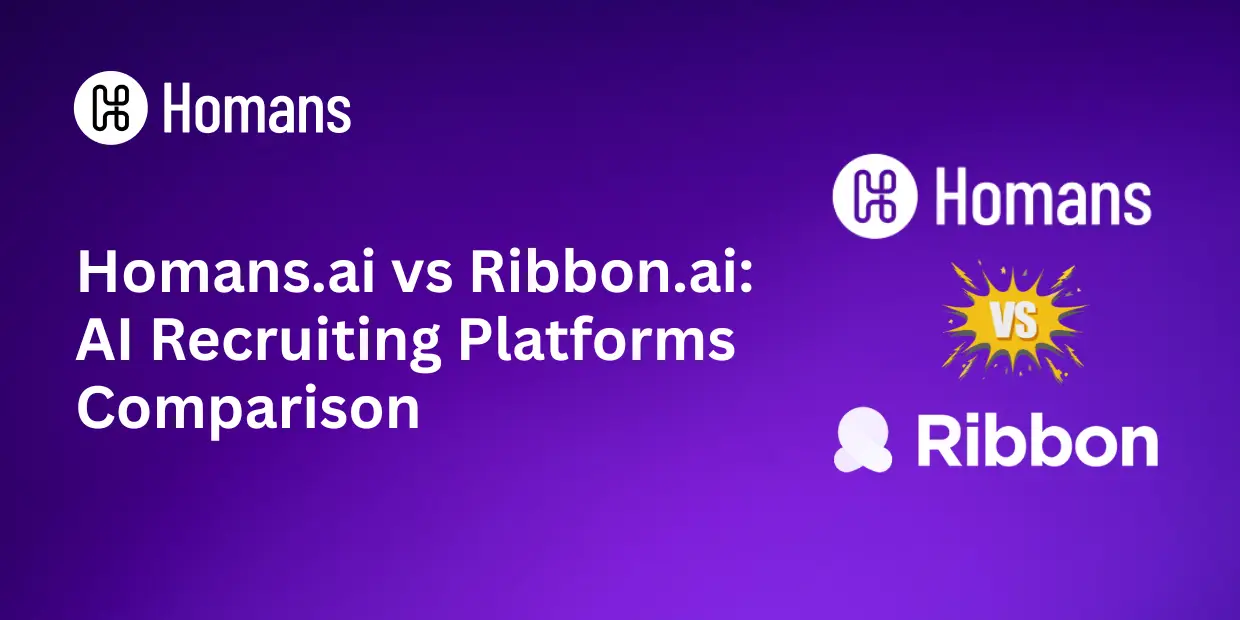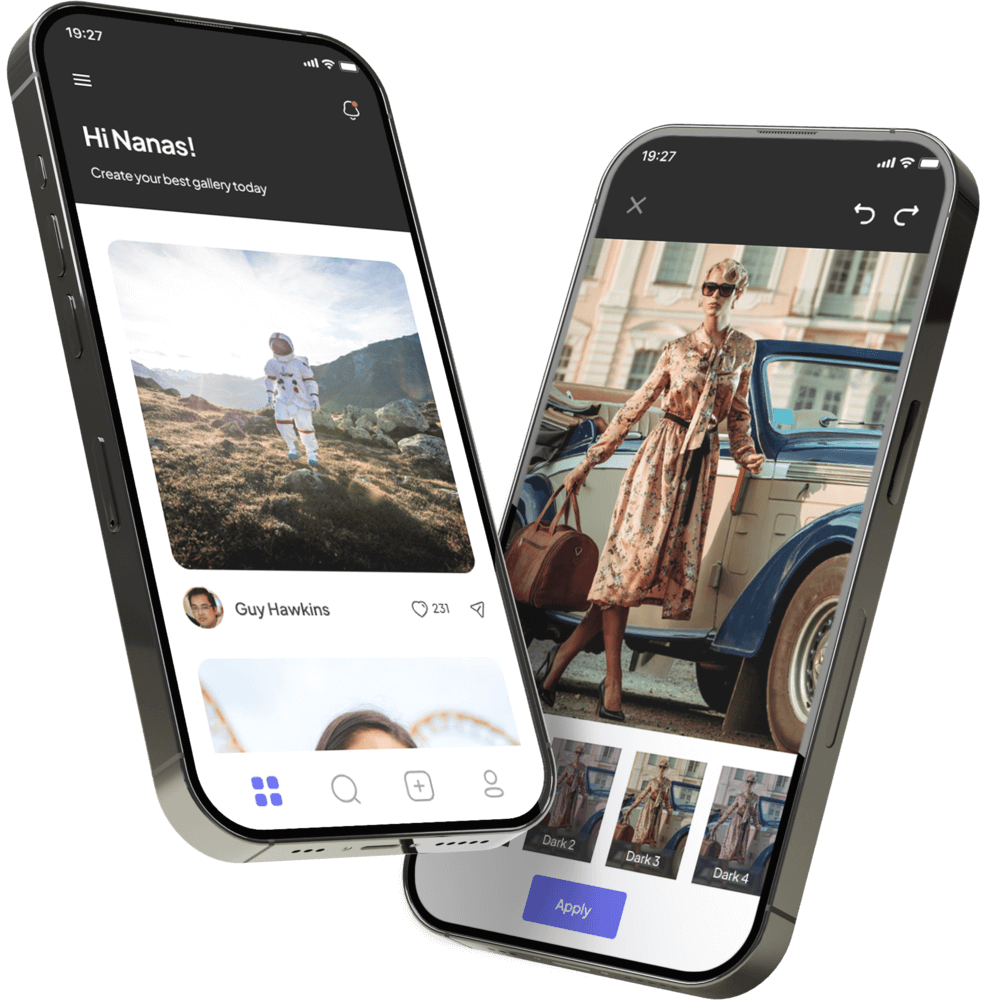Introduction
Hiring bias has long plagued recruitment, often leading to unfair exclusion of qualified candidates based on irrelevant personal characteristics—such as gender, ethnicity, age, or even a candidate’s name. Unconscious and systemic biases negatively impact organizational diversity, employee engagement, and bottom-line success, while increasing reputational and legal risks.
In recent years, AI in recruitment has been touted as an innovative solution with the potential to actively counter bias and make hiring more objective, efficient, and inclusive. But crucial questions remain: Can AI truly eradicate hiring bias, or does it introduce new, more hidden forms? This article critically examines both the promise and pitfalls of AI-driven hiring practices, exploring whether technology can foster genuinely fairer workplaces.
Understanding Bias in Hiring
Bias in hiring refers to any process or judgment that unfairly favors or disfavors candidates based on attributes unrelated to job performance.
Forms of bias in traditional hiring include:
- Unconscious bias: Ingrained preferences or prejudices that influence decisions without conscious awareness. Examples include favoring candidates with similar interests (“affinity bias”) or making inferences based on names, speech, or appearance[1].
- Systemic discrimination: Patterns where institutional practices—often unintentionally—disadvantage certain groups (e.g., consistently hiring from particular universities, or overlooking applicants with employment gaps).
- Stereotyping: Attributing characteristics to applicants based on group identity, such as gender or race.
Real-world examples:
- Research from the American Psychological Association documents how resumes with traditional “White-sounding” names get more callbacks than those with ethnic-sounding names, even when qualifications are identical[8].
- Job descriptions sometimes deter women or minorities through subtly biased language—for instance, seeking a “ninjalike” coder or “aggressive” salesperson can unconsciously skew candidate pools[2].
- Perception bias leads hiring managers to form snap judgments about candidates based on appearance, speech, or background[1].
Consequences of unchecked hiring bias:
- Reduced workforce diversity, missing out on talents and perspectives critical for innovation and growth.
- Legal and reputational risks, including discrimination lawsuits.
- Inefficient hiring, as candidates evaluated on non-essential criteria may not actually be the best fit.
How AI Claims to Reduce Hiring Bias
Advocates for AI-based recruitment argue that by standardizing decision-making and de-emphasizing human subjectivity, AI can significantly decrease bias.
Structured, Skills-Based Assessments
AI tools can be programmed to focus on relevant skills, qualifications, and job-related competencies, rather than subconscious impressions or irrelevant factors[3][7]. For instance, platforms like Fonzi automate resume and phone screening to prioritize real-world experience and abilities over degrees or past employers[3]. Skills-based hiring has been shown to widen candidate pools and enhance objectivity.
Blind Evaluation
AI-driven processes can automatically remove personal identifiers (name, age, gender, ethnicity) from resumes and applications, a practice known as “blind hiring”[2][5]. This forces evaluation to center purely on merit and job fit, preventing psychological triggers tied to demographic cues. Several blind hiring platforms use AI to enforce strict anonymization during screening.
Consistent, Repeatable Processes
Unlike humans, who may interpret criteria differently from case to case, AI can apply consistent algorithms and evaluation rubrics to all applicants[5][7]. This uniformity means every candidate is measured against the same standards at every stage, reducing arbitrary variability and increasing the fairness of outcomes.
Additional approaches include:
- Inclusive language auditing: AI scans job ads and descriptions for biased wording, promoting more diverse applicant pools[2].
- Objective scoring: AI-generated assessments and interviews use pre-defined metrics to limit managerial subjectivity.
Evidence: Does AI Outperform Humans on Bias?
Significant empirical evidence supports the claim that AI, when properly designed and monitored, can be more fair than traditional human-led hiring.
- A longitudinal study in the Journal of Applied Psychology documented a 25% reduction in overall hiring bias with AI-based assessments[1].
- Research shows AI-driven hiring can deliver up to 39% fairer treatment for women and 45% fairer treatment for racial minorities compared to traditional human practices[1].
- 85% of audited AI models now meet industry fairness thresholds, indicating substantial progress in aligning AI tools with anti-bias standards[1].
- Companies like Dell Technologies reported a 300% increase in the diversity of candidates considered after adopting AI tools to structure assessments and shortlist applicants[1].
- In real-world rollouts, “debiased” AI outperformed both traditional and previously biased processes—both by speeding up hire timelines and diversifying candidate selection[1].
Case study:
A leading European bank implemented an AI-powered Applicant Tracking System (ATS) using blind screenings, structured assessments, and periodic audits. The result: a 32% rise in hires from underrepresented backgrounds within a single year, alongside reduced time-to-hire and improved new-hire performance evaluations[4].
Supporting stats:
- AI-based recruitment tools can reduce time-to-hire by up to 50%, enhance candidate quality by up to 35%, and cut costs by 30%[4][6].
Strategies AI Uses to Minimize Bias
Data Diversity
The quality and diversity of training data are crucial. AI systems learn from past hiring decisions. If training data is skewed—reflecting historical, demographic, or institutional prejudices—AI will perpetuate those biases[4]. Leading vendors now actively curate diverse, representative datasets and include “counterfactual” scenarios to help AI avoid outdated stereotypes.
Bias Detection and Correction
Modern AI platforms are embedded with algorithmic bias detection tools. These constantly monitor hiring outcomes for statistical disparities. If AI models are found to unfairly favor or disadvantage particular groups, their logic can be updated via “fairness constraints” or retraining[4].
“The beauty of AI is that if you notice bias, you can correct it quickly—something that’s much harder with a human.” — Brett Martin, Fonzi AI
AI can also flag biased outcomes for human review—prompting recruiters to revisit questionable assessments or tweak evaluation thresholds.
Transparency and Auditability
Transparent, explainable AI (XAI) is emerging as a best practice. Explainable models generate detailed reports on why each candidate was advanced or rejected, supporting accountability and enabling audits[4][8]. Some organizations now favor open-source AI tools to promote trust and facilitate third-party reviews.
- Companies using explainable AI and regular audits saw a 45% reduction in biased decisions compared to those relying solely on end-to-end automation[4].
Human-AI Collaboration
AI works best when augmented with informed human oversight, rather than used as a “black box” gatekeeper[4][6]. Recruiters can review and challenge AI recommendations, inject nuanced judgment, and conduct “bias spot checks.” Human-in-the-loop processes were shown to reduce biased rejections and foster a culture of fairness.
The Caveats: Can AI Ever Be Truly Bias-Free?
Despite progress, several critical limitations remain.
Limits of “Objective” Assessment
AI systems are only as unbiased as their data and design. If trained on historical hiring patterns riddled with exclusion, even the best AI will inherit or amplify pre-existing prejudices[6]. This is referred to as “algorithmic bias.” Mitigation requires continual vigilance and remedial action.
Algorithmic Bias
The individuals who design and tweak AI models may unconsciously program in their own worldviews—intentionally or not. If model developers overlook potential sources of bias, the tools will carry those hidden assumptions forward. Auditability becomes more complex for highly sophisticated or opaque algorithms[6].
Transparency Challenges
Some AI (especially deep-learning models) qualifies as a “black box”—even data scientists struggle to precisely explain why a given candidate is recommended or rejected[4][6]. This limits accountability and may erode candidate or stakeholder trust.
The Need for Regulation and Ongoing Scrutiny
AI is not a “set it and forget it” remedy. As workplace dynamics evolve, both algorithms and training data require periodic review and retraining to stay fair and compliant[7][6]. Many experts call for legal frameworks and standardized fairness audits.
Conclusion: The Path Forward
AI can dramatically reduce many forms of hiring bias, particularly by neutralizing inconsistent human judgment and focusing on skills and merit rather than stereotype triggers[1][3][7]. Studies show substantial gains in diversity, speed, and compliance when organizations implement AI thoughtfully.
However, absolute removal of bias is unlikely. AI’s effectiveness is fundamentally shaped by the diversity of its data, the care of its design, and—most importantly—the vigilance of ongoing human stewardship[6]. In particular, algorithmic and data-driven biases can be subtle and require continual monitoring.
The most effective, most equitable hiring approaches blend:
- Robust, audited AI tools that are transparent and regularly updated
- Diverse and inclusive training data
- Structured, skills-first assessments
- Continuous human oversight to catch mistakes and adjust systems accordingly
When these pillars work together, organizations can drive reductions in bias, foster fairer hiring, and make true progress toward diversity and inclusion.

